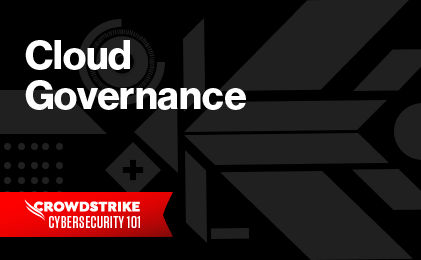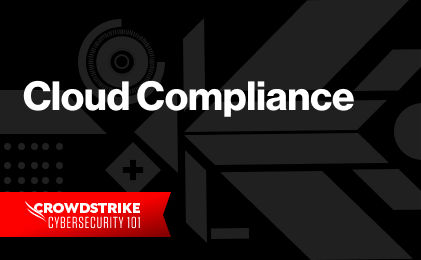Master CNAPPs for Superior Cloud Security
Master CNAPPs for Superior Cloud Security
Running multi-cloud environments has become a common approach among modern organizations. Whether it’s for reasons of cost and performance or redundancy and availability, going multi-cloud is now standard fare. However, organizations that jump on this trend also face significant security risks stemming from identity theft, supply chain attacks, and vulnerabilities due to the isolation between different cloud services and common misconfigurations. All this has led to a jaw-dropping 75% increase in cloud environment intrusions.
With these risks in mind, proper multi-cloud management is more important than ever. In a multi-cloud setting, maintaining consistent security across various platforms is crucial. In this post, we’ll look at the security challenges and best practices related to operating multi-cloud environments.

The Complete Guide to CNAPPs
Download CrowdStrike's Complete Guide to CNAPPs to understand why Cloud-Native Application Protection Platforms are a critical component of modern cloud security strategies and how to best integrate them to development lifecycles.
Download NowCommon challenges of multi-cloud environments
Managing a multi-cloud environment comes with several security-related challenges. Though a multi-cloud setup offers flexibility and scalability, it also introduces complexities that can impact security, visibility, and overall management. Common challenges include:
- Cross-cloud visibility: Each cloud provider has its own monitoring tools and dashboards. With so many disparate providers, it becomes difficult to get a comprehensive, unified view of your operations and security posture.
- Vulnerabilities due to siloed security tools: With each cloud platform providing its own set of security tools, you end up with security and information silos. These silos can lead to vulnerabilities that can be exploited if not properly addressed.
- Achieving a consistent and unified approach: A consistent security posture requires a unified approach to security, and that’s hard to enforce or attain when dealing with multiple clouds. Doing so involves integrating various tools and policies across clouds.
- Managing complex applications with many components: For larger enterprises running complex applications on multiple clouds, the sheer volume of containers and microservices — which may even number in the hundreds of thousands — adds significant complexity. Monitoring and management also become more complicated, increasing the risk of security breaches.
- Controlling costs and allocating resources: If not managed efficiently, multi-cloud environments can lead to spiraling costs. Balancing resources and costs across different cloud platforms is a key challenge.
- Addressing the skills gap: The complexity of multi-cloud environments demands specialized skills. Organizations often face a skills gap in effectively managing these environments.
- Ensuring business continuity and disaster recovery: Developing a cohesive strategy for business continuity and disaster recovery is more complex in a multi-cloud environment when operating with multiple platforms.
Each of these challenges requires careful consideration and strategic planning to ensure a secure, efficient, and cost-effective multi-cloud environment.
Cybersecurity implications of multi-cloud management
As organizations spread their operations across multiple cloud platforms, they face unique security risks that are not present in single-cloud or on-premises environments. The primary challenge lies in the increased attack surface. Because each cloud platform has its own set of security controls, configurations, and compliance requirements, an organization must take a thoughtful and strategic approach to prevent inconsistencies and potential vulnerabilities.
Organizations must ensure the consistent application of security policies across all clouds and environments. This includes managing user access, protecting data, and monitoring for threats. However, a one-size-fits-all approach to security doesn’t work in a multi-cloud setup. Therefore, multi-cloud management must include tailoring security measures to each cloud environment while maintaining a cohesive overall strategy.
Cybersecurity best practices in multi-cloud environments
In multi-cloud environments, cybersecurity best practices are essential to protect against complex threats. These practices, informed by CrowdStrike's insights on multi-cloud security and securing cloud native applications, are crucial for maintaining a secure and resilient multi-cloud infrastructure.
- Accelerate cloud threat detection and response: Leverage tools that provide rapid detection and response mechanisms to quickly identify and mitigate threats across multiple cloud platforms.
- Consolidate tools: Streamline your security toolkit by adopting a singular and central platform that integrates various tools into a unified system, thereby simplifying management and improving efficiency.
- Gain complete visibility: Adopt tools that can help you achieve a comprehensive view of all assets and activities — across all clouds — to monitor your security posture and detect anomalies effectively.
- Leverage automation: Use automation to handle repetitive tasks, reduce human error, and enhance the efficiency of security operations.
- Synchronize security policies: Ensure that security policies are consistent and uniformly enforced across all cloud platforms to avoid gaps in protection.
- Create holistic monitoring: Develop an integrated monitoring system that provides a complete overview of your multi-cloud infrastructure, aiding in proactive threat identification and management.
- Ensure multi-cloud compliance: Maintain compliance with relevant regulations and standards across all cloud services to protect against legal and financial repercussions.
- Understand your adversaries: Stay informed about potential cyber threats and adversaries' tactics to better prepare and defend against attacks targeting your environments.
These cybersecurity best practices are best achieved by organizations that adopt a unified security platform capable of providing a cohesive approach to multi-cloud security.

eBook: Reducing the Attack Surface
Public cloud services have become a necessary component for most organizations’ long-term strategic growth plans. But as the cloud enables new ways of working, it also raises important considerations for how organizations must adapt and expand their cybersecurity capabilities to protect their assets, data and customers within the cloud environment.
Download NowSecuring a multi-cloud setup with the CrowdStrike Falcon platform
Of all the aspects of multi-cloud management, cybersecurity is the most critical. Managing cybersecurity in multi-cloud environments is challenging because of the many unique risks and threats presented by the expanded attack surface and increased complexity of the setup. A unified approach to multi-cloud cybersecurity requires the adoption of several best practices, including tool consolidation, automation, and holistic monitoring.
With its cloud security posture management (CSPM) solution CrowdStrike Falcon® Cloud Security, the CrowdStrike Falcon® platform provides comprehensive security enforcement, visibility, and compliance across hybrid cloud and multi-cloud environments. With the Falcon platform, organizations can efficiently manage their security posture across multiple cloud environments. The Falcon platform simplifies the complex task of multi-cloud security, making it easier for businesses to focus on growth and innovation while maintaining a strong defense against cyber threats.
For more information about CSPM from the Falcon platform, schedule an on-demand demo or contact us today.







